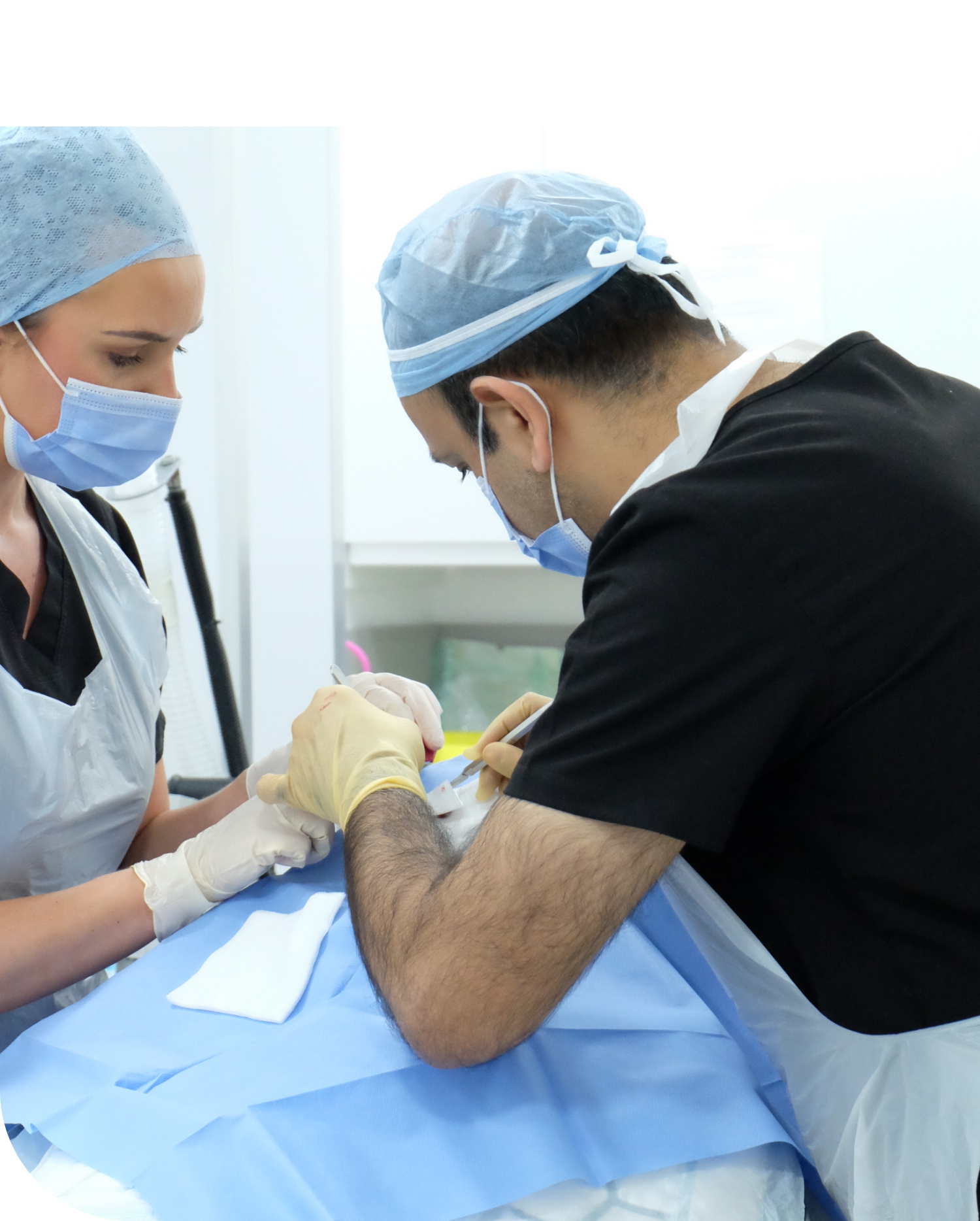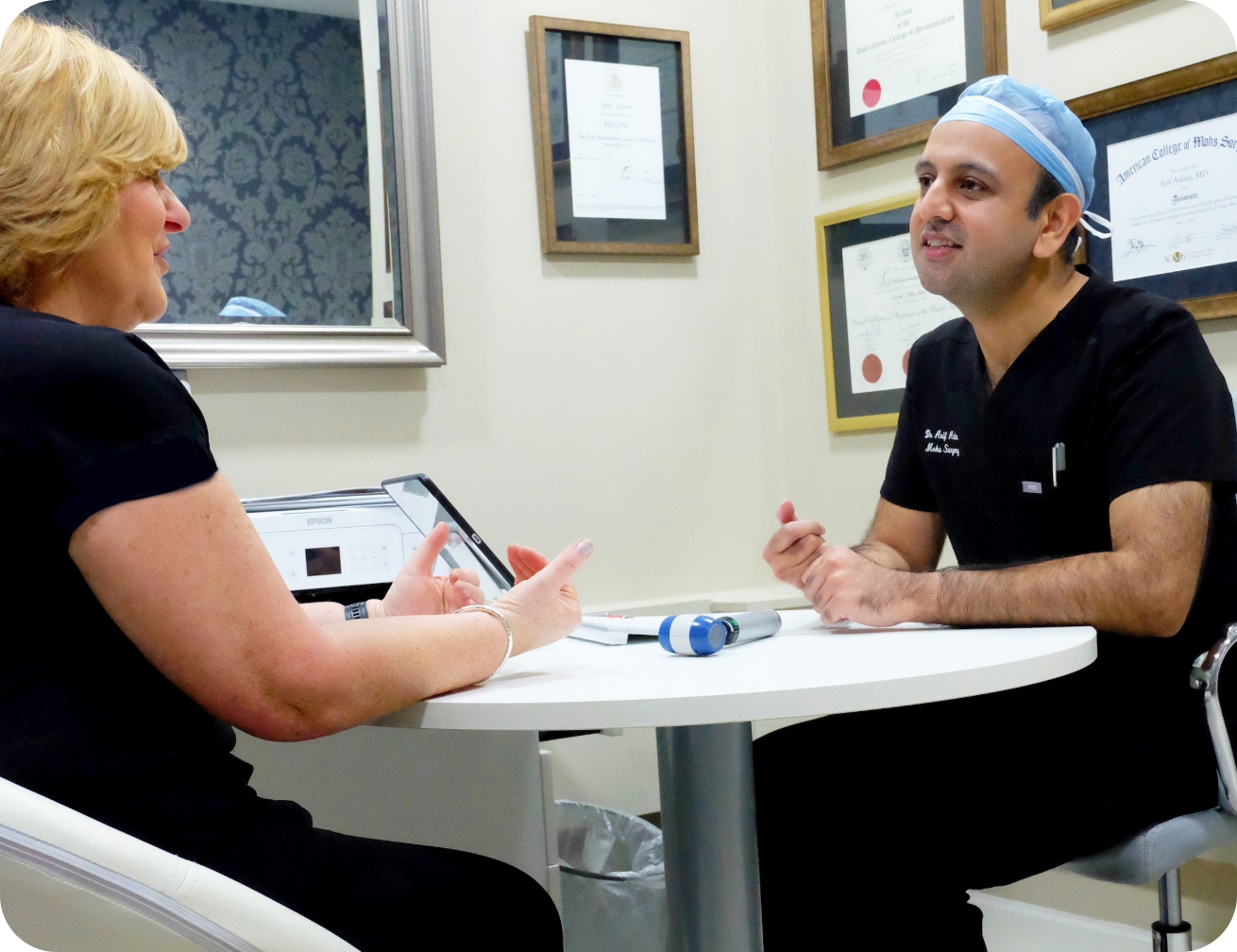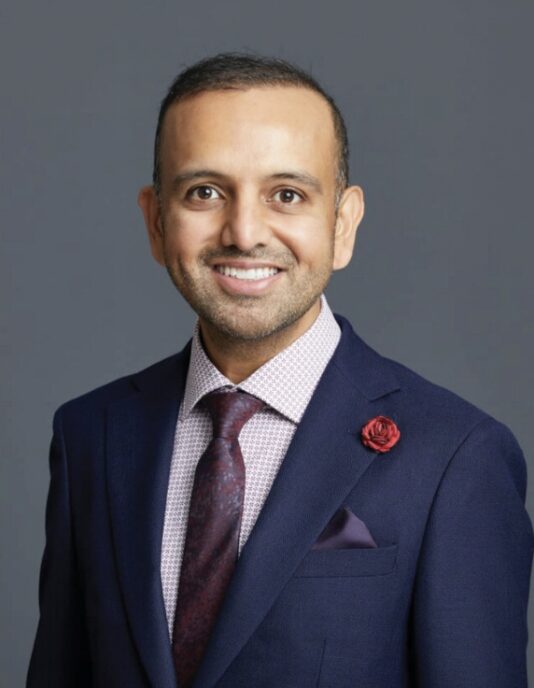Surgery
And treatments
Specialising in Mohs Surgery and a broad range of skin cancer treatments and therapies, Dr. Aslam will create a custom treatment plan to best suit the needs of each patient.


Mohs Surgery
If you have skin cancer and are worried that removal will leave a noticeable scar, consider Mohs surgery with Dr Arif Aslam in Lancashire and Greater Manchester. Mohs surgery offers a 99% cure rate for basal and squamous cell skin cancer while sparing healthy tissue. Mohs surgery demands the specialist skills and training of a Mohs dermatologic surgeon like Dr Aslam who has performed several thousand Mohs surgeries. He serves the whole of Lancashire and Greater Manchester including: Lancaster, Blackpool, Burnley, Blackburn and Rochdale.
Mohs surgery is a procedure performed by a fellowship trained dermatologist. This involves the precise removal of skin cancer, then checking the tissue under a microscope. If Dr Aslam sees cancer cells he removes another layer. He repeats this process until all of your skin cancer cells are gone.
What to expect
Dr Aslam will numb the treatment area beforehand so you don't feel any pain. After surgery you may feel pain at your treatment site. It's also normal for the treated area to feel itchy and tight as your body heals. You can take Paracetamol to relieve any discomfort.
Once the treatment site is numb, Dr Aslam begins by removing the visible skin cancer to examine it under a microscope. While he examines this tissue you will relax in the waiting room with a temporary bandage over the treatment site.
The process may require several stages before your cancer is completely gone. Removing the tissue itself only takes 10 - 15 minutes but it can take 1-2 hours for the onsite lab to prepare the tissue for Dr Aslam to examine. There is no way to predict how many stages of Mohs surgery will be needed but Dr Aslam usually eliminates most skin cancers in three stages or less.
After your skin cancer is completely gone, Dr Aslam may leave your surgery site open, close it with stitches or close it with a skin graft or flap. He bases this decision on your health, safety and the best cosmetic result. You can go home on the same day as your procedure however you should not make any other plans for the day of your surgery.

Other options for surgery & treatment
Frequently used to remove basal cell carcinomas and high-risk squamous cell carcinomas, surgery involves administering a local anaesthetic and then removing the tumour and a margin of surrounding tissue. The tissue is then sent to a dermatopathologist who can verify that the entire tumour was removed.
Used for low risk basal cell carcinomas, the procedure begins by administering a local anaesthetic, after which Dr Aslam scrapes away layers of cancerous tissue with a knife-like instrument called a curette. An electric needle is then used to control the bleeding and destroy cancerous cells that may remain.
Cryosurgery is a treatment that involves the application of liquid nitrogen and is particularly effective for superficial basal cell carcinomas, which grow on the top layer of the skin. Liquid nitrogen is applied to the area that freezes the abnormal tumour tissue. The frozen area of skin then heals over a period of 7-10 days.
Topical chemotherapy is a cream applied directly to the skin cancer. Topical chemotherapy is usually used for precancerous lesions such as actinic keratosis and squamous cell carcinoma in situ (also called Bowens disease). It may also be used for superficial basal cell carcinomas especially on the trunk and limbs. The success rate of topical treatments is between 50-90%.
Radiotherapy destroys cancer cells and shrinks tumours using x-rays. This only takes place in NHS hospitals and you will need to see an oncologist for an assessment first. There is no data on histologic cure rates but the recurrence rates are reported to be between 9-16% at 5 years.
About Dr Arif Aslam

Patient care and cutting edge treatments are paramount to my work as a Consultant Dermatologist where I am always striving for the best possible outcomes for my patients.
Dermatological Surgeon & Mohs Micrographic Surgeon, Honorary Senior Lecturer.
MBChB, MRCP (UK), MRCGP, MRCP (Derm), FRACP, FACD, FACMS
An experienced consultant dermatologist, Dr. Aslam is a double fellowship-trained Mohs micrographic surgeon and fellow of the prestigious American College of Mohs Surgery (ACMS).
He is one of only a few dermatologists in the UK and Europe with this accreditation and the only UK dermatologist with membership of both the Australasian College of Dermatologists and American College of Mohs Surgery.